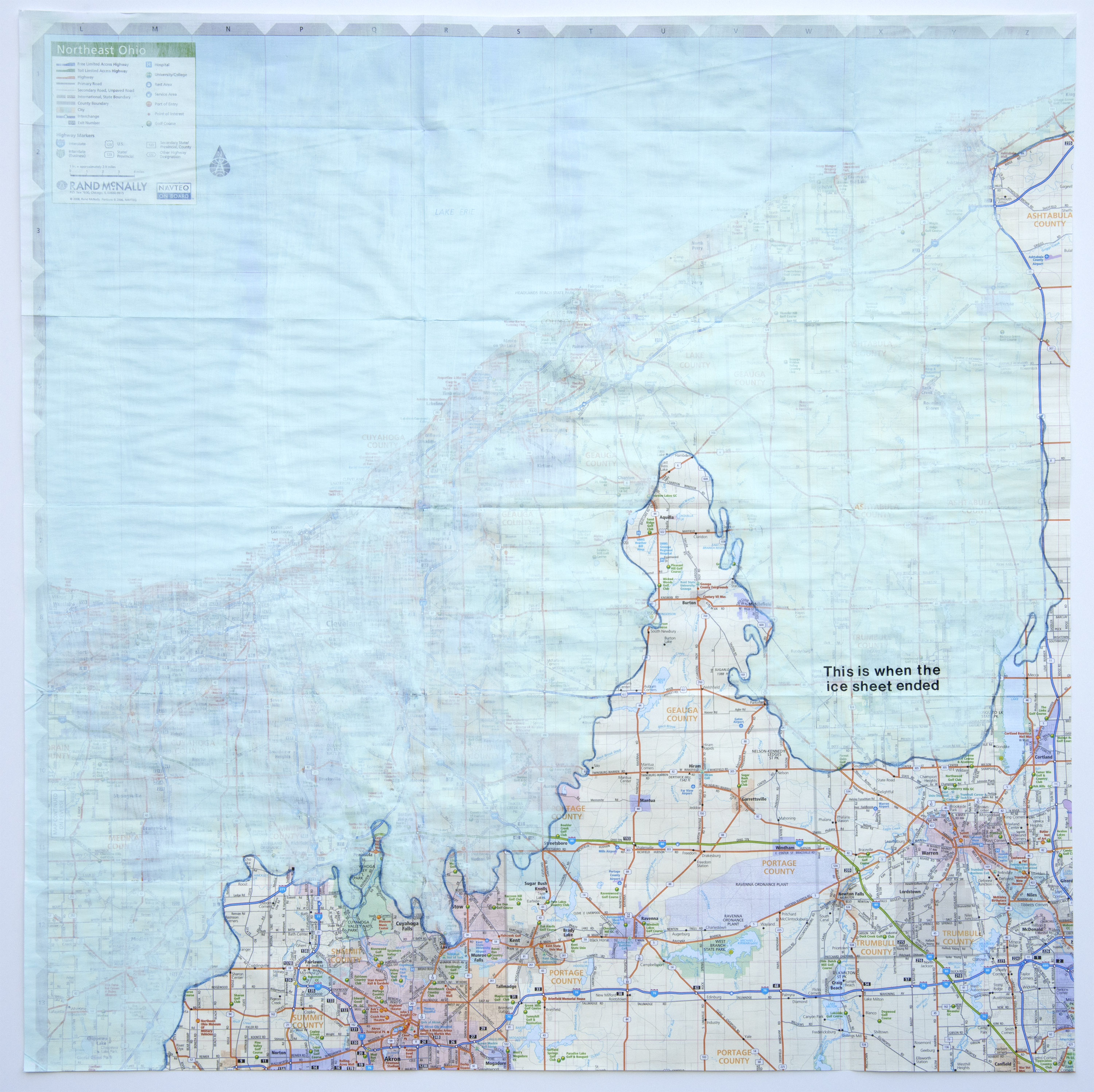Each year, the Cleveland Institute of Art celebrates student work while also providing an opportunity for students to organize a major exhibition on their own.
This year is no different, as CIA’s 74th annual Student Independent Exhibition will open with a reception from 6 to 9 p.m. Feb. 14 in Reinberger Gallery, 11610 Euclid Ave. in Cleveland.
The exhibit, organized entirely by students, this year is juried by artists Cannaday Chapman, Ellen Donnelly and Christopher Gentner.

Maeve Billings, committee chair for the exhibition and a painting major to graduate in 2021, told Canvas about the process for selecting jurors and some of her favorite aspects of the two-semester project and exhibit.
The 74th annual CIA Student Independent Exhibition will open Feb. 14. As a committee member, when did the exhibit begin to take shape and what was the process like? Was this your first experience organizing such an endeavor?
We started working on this exhibition back in August. We had our first meetings as a group and began planning then, but it didn’t really take shape until we selected our three jurors. The personalities of the jurors and their tastes are what really make each iteration of SIE unique. This year we had three artists from completely different backgrounds and ways of working, and the exhibition reflects this diversity.
This is my first time ever attempting to organize a show like this. CIA builds opportunities to practice exhibition organization into the curriculum, but mostly those are semester-long projects managed by a minimum of 20 students. The SIE committee is only three to four students, trying to manage a project that spans two semesters, multiple administrative departments in CIA and three jurors from different locations. It’s a significant undertaking, but a challenge that I was really excited to take on.
What I realized early on is that SIE is all about communication. As committee chair, I balanced the rest of the student committee, Nolan Meyer, E.T. (Erykah Townsend), and Addie Lutzo, as we worked with CIA’s student life, institutional advancement, marketing and business affairs offices. I was also in charge of reaching out to potential jurors and planning their visits to Cleveland. And of course, connecting with the student body about jurors and submitting work was also a major component. All in all, SIE became a balancing act of tracking different moving parts and making sure they came together just right for the opening.
What was selecting jurors like? What kind of factors did you consider for making the ultimate decisions?
SIE is completely student run, and that extends to juror selection. We ask the student body of CIA to propose jurors and then later vote on them. As the committee, we screen potential jurors based on their professional experience to make sure that they can successfully give an artist talk, speak to students in a studio visit format, and jury a show with a large amount and variety of submissions. We then work with the list of jurors selected by the student body to find the best based on the students’ votes. This selection process guarantees that SIE is unique and fresh every single year, with different groups of students picking artists and professionals that one might not expect normally.
What were the most difficult and rewarding parts of the process?
One of the most difficult parts of SIE is the actual jurying process. SIE is unique in that students participate not only by submitting work to be juried, but in the managing of the show as the committee. The committee is present while the jurors select work, though we are not allowed to comment or participate. Therefore, we watch not only our own works be selected or not, but also pieces made by our fellow students. It was emotionally challenging watching people you care about not getting selected, but it’s a good look at what will happen behind the curtain of other exhibitions.
One of the most rewarding parts of SIE was hearing the students talk about their studio visits with the artists. SIE is all about what we can give back to our peers and school community, and being able to give positive and special experiences with professional artists to other students is very personally rewarding.
Do you have work in the exhibit? If so, what?
Yes, I do. My painting, “Party Time,” was accepted into the show, which is very exciting. I had a painting selected last year, too, and it was a nice surprise to be in to the show two years in a row. “Party Time” deals with complicated feelings surrounding aging, and references memento mori symbols present in historical still life paintings.

Two of my fellow committee members also had work selected. Nolan Meyer’s painting, “de_lake,” is a painting of a sunset from a glitched video game that compares the practices that make up both art forms.

E.T.’s mixed media piece, “It Was a Beautiful Day in the Neighborhood,” examines pop culture by bringing it into the realm of fine art and asking the viewer to reconsider the divisions between low and high culture.

Is there any piece by another artist in the exhibit that is particularly special to you?
One of my favorite pieces in the show is actually by a friend of mine, Elias Betchik. His piece, “Basin,” is a vessel formed from a single sheet of copper and it’s the largest single piece he’s made to date. He experiments with materials fearlessly, and in this piece he used magnets and sand with a high iron content to form the spiky protrusions coating the outside of the vessel. Hidden in tiny depressions on the surface are small precious stones, and the interior of the vessel glows with a transparent green enamel coating. Elias rewards the viewer’s close attention with little surprises like this, and his focus on surface materiality creates a tactile experience unique to his work.

The exhibit is on view through March 15.










